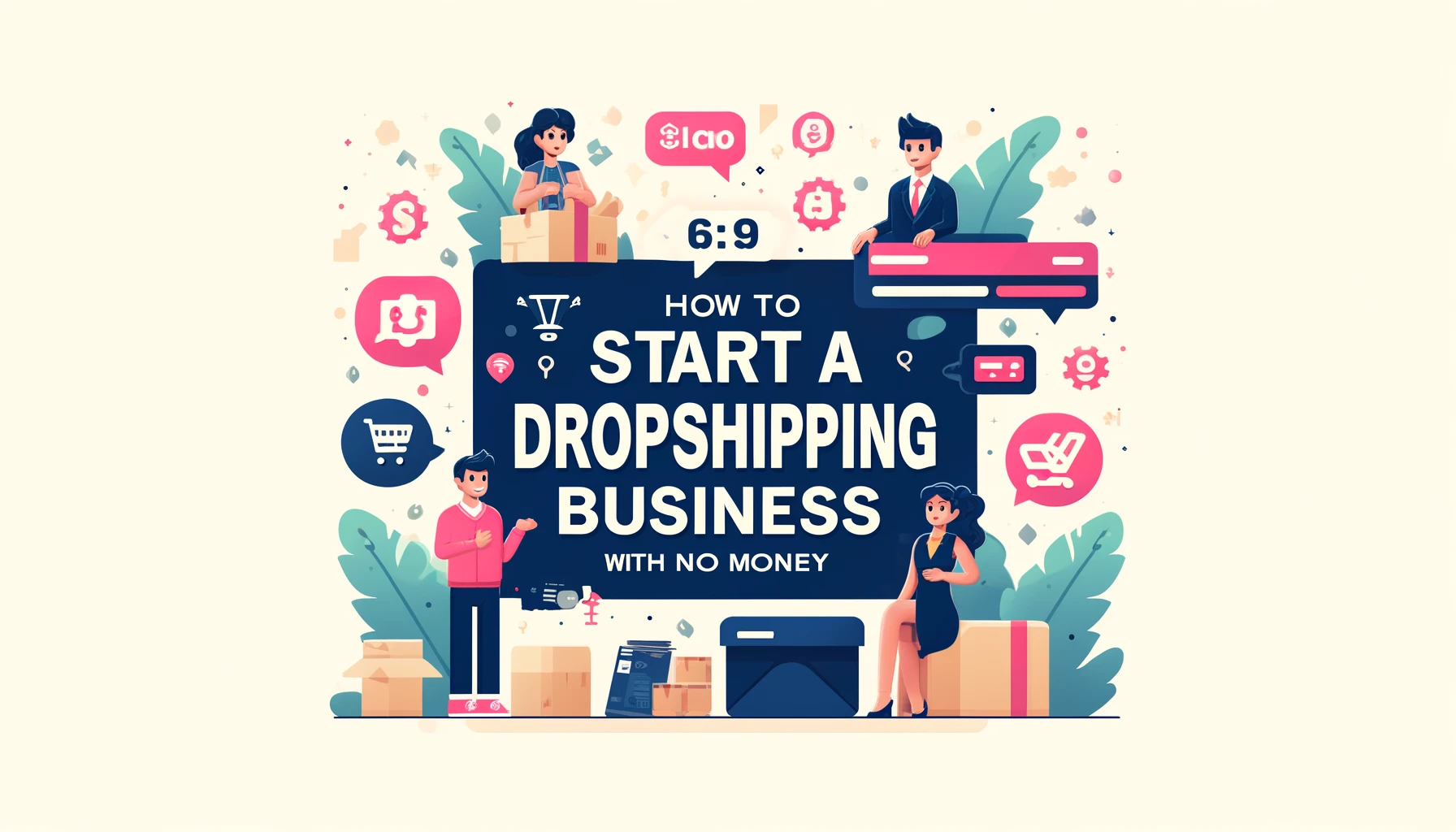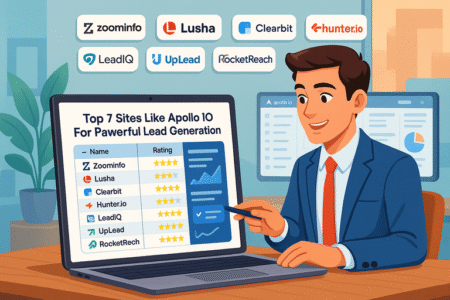Table of Contents
Starting a dropshipping business with no money may seem daunting, but it’s entirely achievable with the right approach. This guide will walk you through the essential steps to launch your venture without upfront costs.
Choose a Profitable Niche for Your Store
Finding a niche is essential to start a dropshipping business with no money. A focused niche allows you to target specific customer needs, stand out from competitors, and build a loyal customer base that values your product offerings.
Identify Market Gaps and Opportunities
Explore areas where demand is high but competition is low. I suggest researching forums, social media, and online communities to see what potential customers are missing in their current choices. Uncovering these gaps can provide a unique advantage for your store.
Many niches are saturated, but hidden opportunities exist if you dig deeper. Consider customer pain points and feedback about existing products; these often reveal untapped areas. A niche where competitors overlook certain details can help you capture a devoted audience.
You can also think about seasonal trends and market shifts. Products that solve timely problems or appeal to seasonal interests can generate consistent traffic. Market opportunities are easier to seize when you’re tuned into what customers currently need.
Identifying unique selling points within a niche is valuable. Even if similar products exist, offering distinctive benefits—like eco-friendly materials or faster delivery—can set your store apart. This approach helps attract customers looking for something specific.
Analyze Competitor Offerings and Strategies
Understanding competitors’ strengths and weaknesses will guide your niche strategy. Analyze their product range, website layout, and customer reviews. Competitor analysis reveals what’s working for them and what might be lacking, giving you a clear path to differentiation.
Dive into the pricing strategies they use. Knowing their prices, discount tactics, and customer engagement methods can provide insights into positioning your products effectively. Offering comparable or better value is crucial to attracting price-sensitive shoppers.
Look at their customer service practices and return policies. These often impact purchasing decisions, and by improving on their weak points, you can win over hesitant buyers. Reliable customer support often turns one-time shoppers into repeat customers.
Competitor success often depends on marketing channels, so observe where they are most active. This could guide your marketing approach, helping you decide whether to focus on social media, content marketing, or SEO to reach your audience effectively.
Evaluate Product Demand and Trends
Choosing in-demand products within your niche is key. I recommend using free tools like Google Trends and keyword planners to gauge product popularity. High-demand items ensure steady traffic, increasing your store’s chances of early success without hefty investments.
Seasonal demand can be a great opportunity if planned wisely. Stocking items that peak during holidays or specific seasons can boost your store’s visibility. If you align with these trends, your marketing efforts become more impactful, especially for a new store.
Evaluating long-term trends helps in choosing products that remain popular over time. Products with evergreen appeal ensure that your store stays relevant. Consistent demand minimizes the need for frequent product rotation, saving you time and resources.
Listening to customer feedback on similar products provides insights into recurring issues or features they wish were improved. By selecting products that address these preferences, you build a store that’s truly valuable to your target audience.
Find Reliable Suppliers Offering No Upfront Fees

Partnering with dependable suppliers who don’t require upfront fees is vital for a profitable dropshipping business. I advise focusing on suppliers who offer quality products, reliable shipping, and clear policies to minimize risks and provide value to your customers.
Utilize Free Supplier Directories and Platforms
Use directories like AliExpress, Spocket, or Oberlo to find suppliers that don’t demand upfront payments. These platforms list vetted suppliers with no setup fees, making them ideal for a budget-conscious start. Quality suppliers ensure your store’s reputation and customer satisfaction.
Free directories give you access to thousands of products across various categories. This variety enables you to test multiple niches without financial commitment, which is helpful when you’re exploring what resonates best with your audience.
Each platform often includes supplier ratings and reviews. These insights allow you to make informed choices, selecting suppliers with positive feedback. High ratings often correlate with dependable shipping and product quality, which are crucial for customer retention.
Building relationships with these suppliers helps in negotiating favorable terms. When you consistently generate sales, some suppliers may offer discounts or faster shipping, further improving your business model and customer satisfaction.
Assess Supplier Reliability and Product Quality
Reliability is non-negotiable when starting a dropshipping business. Look for suppliers with good track records, quick response times, and clear communication. A reliable supplier ensures timely deliveries, which is essential for building trust with your customers.
Product quality should match customer expectations. I suggest ordering samples to assess quality before listing products. This approach lets you verify that items meet your standards, minimizing the risk of returns and unhappy customers due to poor-quality goods.
Reviewing customer feedback on the supplier’s products can reveal consistent issues. Repeated complaints about a particular item or service can be a red flag. This feedback protects your store from dealing with unreliable products and ensures happier customers.
Suppliers with transparent policies are often more dependable. Clear return and refund policies simplify your operations, reducing the risk of miscommunication or unexpected costs. This clarity helps set accurate expectations for customers as well.
Understand Shipping Times and Policies
Shipping speed can make or break customer satisfaction. Check suppliers’ average delivery times, particularly to your target market. Faster shipping attracts more customers, while long wait times might deter potential buyers. Knowing shipping times allows you to set realistic expectations.
Different suppliers offer various shipping options, so review these carefully. Some may have free shipping but slower delivery, while others charge for expedited shipping. Offering both options to customers can enhance their shopping experience and increase conversions.
Suppliers with reliable tracking services are beneficial. Tracking options reassure customers by allowing them to monitor their orders, which can reduce post-purchase anxiety and lead to more positive reviews. This builds trust in your brand as a dependable choice.
Be clear on the supplier’s shipping policies, including international shipping if relevant. Understanding their processes helps you prepare for any issues, such as customs delays, allowing you to communicate clearly with customers and manage their expectations effectively.
Build Your Online Store Using Free Tools
Using free tools makes it possible to start a dropshipping business with no money. Many e-commerce platforms, themes, and plugins provide everything needed to set up a fully functional store without any initial investment.
Select a User-Friendly E-commerce Platform
Choosing an e-commerce platform is a critical first step. I suggest exploring platforms like Shopify, WooCommerce, or BigCommerce, which offer user-friendly interfaces. These options make it simple to navigate and manage your store as a beginner.
A good platform should simplify essential tasks. With easy-to-use dashboards and clear options, you’ll spend less time on technical setups. User-friendly platforms help keep your focus on growing the store rather than solving complex issues.
Look for platforms with flexible customization. They let you add unique features or design elements to your store, allowing it to reflect your brand. This flexibility enhances user experience and sets your store apart from competitors.
Free trials are an excellent way to test a platform. Experiment with different ones before committing to find the best fit. Testing gives you insights into each platform’s strengths, helping you make an informed choice for your business.
Customize Your Store with Free Themes and Plugins
Customizing your store helps build a strong brand presence. I recommend starting with free themes from your chosen platform, which allow you to create a professional look without spending a dime. A visually appealing store attracts and retains visitors.
Themes with responsive design ensure your store looks good on any device. A theme that adapts well to different screen sizes enhances user experience, which positively affects engagement and, ultimately, sales. This detail is essential for a smooth browsing experience.
Plugins can add vital functionality. Use free plugins for features like SEO optimization, product reviews, and social media integration. These tools make your store more interactive and functional, helping boost both user satisfaction and search visibility.
Too many plugins may slow down your site, so choose wisely. I advise using only essential plugins that add genuine value to the user experience. A fast, responsive site reflects well on your store and can lead to more conversions.
Optimize Your Store for Mobile Users
With many shoppers using mobile, optimizing for mobile devices is crucial. I suggest testing your store’s appearance on various mobile screens to ensure smooth navigation. A mobile-optimized store keeps visitors engaged and reduces bounce rates.
Use a clean, simple layout that loads quickly on mobile. Long load times frustrate users, causing them to leave before exploring. Fast-loading pages improve user experience and help with search engine ranking, which boosts visibility.
Mobile users value easy access to product information. Ensure product descriptions, images, and calls to action are easily viewable on small screens. Clear and concise layouts help shoppers make purchase decisions faster, benefiting your store.
Make checkout seamless on mobile. Implement a simple, secure, and quick checkout process to prevent cart abandonment. Providing a smooth checkout on mobile devices can increase conversion rates and enhance customer satisfaction significantly.
Create Compelling Product Listings to Attract Buyers

Product listings are where customers decide to purchase, so I recommend creating compelling descriptions and visuals. Clear, informative listings engage shoppers, providing them with the confidence to make buying decisions, ultimately driving more sales.
Write Persuasive and Informative Product Descriptions
Descriptions should go beyond basic details. Highlight product benefits and unique features to capture attention. Explain how each item solves a problem or meets a need; this approach connects with shoppers on a personal level, making them more likely to buy.
Descriptive language can make a product more appealing. I suggest using words that evoke sensory experiences or emotions, helping customers imagine the item’s value. This type of copy draws readers in, enhancing their shopping experience and encouraging purchases.
Avoid generic language; be specific. Describe aspects like materials, sizes, and usage tips to answer questions customers might have. Specificity builds trust, making customers feel informed and confident about their choice before adding items to their cart.
Using bullet points is effective for readability. A structured format makes descriptions easy to scan, helping busy shoppers get information quickly. When information is accessible, customers are more likely to engage and ultimately convert.
Use High-Quality Images and Videos
Images should showcase the product from different angles. High-quality visuals are essential as they provide a realistic view, which reduces hesitation. Photos that clearly show details help customers feel they know what they’re buying, enhancing trust in your store.
Videos can highlight product functionality. A short video demonstrating the product’s use or benefits adds depth to listings. Videos increase engagement, allowing customers to see the item in action, which can help in decision-making.
Consistency in images builds brand identity. Use similar backgrounds, lighting, and styles across all product photos. This creates a cohesive look that strengthens brand perception, making your store appear professional and trustworthy.
Avoid overcrowding the listing with too many visuals. I advise choosing key images that best showcase the product’s features, avoiding redundancy. A clean, uncluttered gallery is more appealing and helps customers focus on the product details.
Implement SEO Best Practices for Product Pages
SEO can bring organic traffic to your product pages. I suggest using relevant keywords naturally in titles, descriptions, and image alt texts. A well-optimized page ranks higher in search results, attracting potential customers without extra marketing costs.
Avoid keyword stuffing; keep the language natural. Use keywords in a way that feels genuine within the description. Overusing keywords can hurt readability, so focus on clarity while subtly enhancing SEO to maintain an engaging experience.
Use structured data for rich snippets. Adding structured data tags can help your product appear with enhanced listings in search results. Rich snippets boost click-through rates by displaying additional information, like ratings or prices, directly in the search results.
Internal links to related products improve site navigation. They encourage users to explore similar items, increasing browsing time and potential sales. A user-friendly navigation structure also positively impacts SEO by reducing bounce rates.
Leverage Free Marketing Channels to Drive Traffic
Using free marketing channels allows you to start a dropshipping business with no money while building your store’s visibility. Free tools like social media and blogging help you reach audiences, creating opportunities to attract and convert customers.
Utilize Social Media Platforms for Organic Reach
Social media is a powerful tool to connect with potential customers. I suggest starting with platforms like Instagram, Facebook, and TikTok to share engaging posts about your products. Consistent posting can organically build a following and attract traffic to your store.
Create content that resonates with your target audience. Use appealing visuals, relatable captions, and trending hashtags to enhance visibility. Engaging posts with high-value information or entertaining content help foster an active community around your brand.
Respond to comments and messages promptly. Interaction shows you value customers’ opinions, creating a positive impression. Building rapport encourages followers to trust and purchase from your store, helping convert engagement into sales.
Experiment with different post formats. Test videos, stories, and carousel posts to see what resonates most. Each platform has unique features that can amplify reach, so use diverse formats to keep your audience interested and increase exposure.
Engage in Content Marketing and Blogging
Blogging helps attract visitors searching for valuable information. I recommend writing blog posts on topics related to your niche. Offering solutions or tips builds credibility, drawing readers to your store and positioning you as a knowledgeable brand.
Use keywords strategically within your blog content. This practice enhances SEO, helping your posts rank higher in search results. High-ranking articles drive organic traffic, potentially attracting visitors who might later explore your product offerings.
Consider guest blogging for additional exposure. Publishing on established websites introduces your store to new audiences. Collaborating with other bloggers expands reach, and linking back to your site can increase both traffic and credibility.
Publish consistently to maintain interest. Regular posts give readers a reason to return, and search engines favor sites with fresh content. Consistent blogging nurtures a steady flow of visitors, building familiarity with your brand and encouraging loyalty.
Participate in Online Communities and Forums
Joining online communities lets you connect with potential customers. I suggest participating in forums like Reddit, Quora, or niche-specific Facebook groups. Answering questions with genuine advice builds trust, attracting people to check out your store.
Find communities relevant to your niche. Being part of the right group enables you to share insights and product links with a receptive audience. Engaging in these spaces can gradually establish your brand’s presence and drive organic interest.
Avoid hard-selling your products. Focus on providing valuable information that addresses users’ needs or pain points. Offering helpful advice naturally builds interest, leading to inquiries about your products without direct promotion.
Look for threads asking for product recommendations. Responding to these questions with honest, helpful suggestions positions your brand as reliable. Engaging without being overly promotional helps establish trust and attract genuine interest in your offerings.
Implement Cost-Free Customer Service Solutions

Delivering excellent customer service can be achieved without high costs. I advise using free tools to create a professional customer experience. Clear communication and responsiveness foster trust, encouraging repeat purchases and boosting customer satisfaction.
Set Up Automated Email Responses
Automated emails keep customers informed about their orders. I recommend setting up email responses for confirmations, shipping updates, and support inquiries. Automated emails assure customers their purchase is on track, enhancing their overall experience.
Automated responses save time. You won’t have to manually respond to common inquiries, allowing you to focus on other tasks. This efficiency ensures that customers receive prompt updates without additional effort from you, streamlining communication.
Personalize your automated emails when possible. Addressing customers by name and tailoring content improves engagement, making them feel valued. Small touches like these add warmth, helping build a more personable relationship with buyers.
Include support information in these emails. Providing contact details or links to FAQs guides customers in case they need help, reducing frustration. Accessible support options lead to higher satisfaction, encouraging loyalty to your store.
Use Free Live Chat Tools for Real-Time Support
Live chat tools enable you to assist visitors directly. Free tools like Tawk.to or Chatra offer real-time communication, which can resolve questions instantly. Prompt responses can ease purchase decisions, improving your store’s conversion rates and user experience.
Live chat personalizes the shopping experience. Customers feel valued when they receive quick, personalized answers. I suggest training yourself on common questions so you can respond confidently, creating a reliable impression that builds trust.
Set availability hours to manage expectations. If you’re not always available, display specific chat hours so customers know when to reach you. Clear communication regarding availability minimizes frustration and aligns with your customer service commitment.
Use chat transcripts to improve your store. Reviewing previous conversations can reveal frequent inquiries or areas for improvement. Addressing these insights helps refine your product listings and enhance overall customer satisfaction.
Create a Comprehensive FAQ Section
An FAQ section saves time for both you and your customers. I suggest compiling answers to common questions about shipping, returns, and product details. A thorough FAQ section can resolve queries instantly, enhancing customer convenience and satisfaction.
Include easy-to-understand answers. Clear, straightforward language makes FAQs more helpful, ensuring customers get the information they need. A well-organized FAQ also reflects a professional store setup, building credibility with first-time visitors.
Update FAQs regularly based on feedback. As your store evolves, so will customer questions. Refreshing FAQs to address new topics or issues shows you prioritize customer convenience, making it easier for them to shop with confidence.
Position the FAQ section prominently. An easily accessible location saves customers from searching, improving their experience. Visible FAQs encourage users to find answers independently, reducing the volume of repetitive inquiries for your team.
Monitor and Analyze Store Performance Regularly
Tracking performance helps refine strategies to grow your dropshipping business. I advise using free analytics tools to gather insights on customer behavior, enabling you to make informed adjustments that improve engagement and boost sales.
Track Key Metrics with Free Analytics Tools
Tools like Kissmetrics provide insights into traffic and user behavior. Monitoring page views, bounce rates, and conversion rates reveals which areas need improvement, helping you fine-tune your store for a better user experience.
Set up tracking for key pages. Understanding visitor activity on product and checkout pages can show you where customers lose interest. Addressing these points increases engagement, helping convert more visitors into customers.
Check the sources of your traffic. Knowing whether visitors come from social media, search engines, or referrals helps you identify the most effective channels. Focus on successful sources to drive targeted traffic, maximizing your marketing efforts.
Use insights to refine product listings. Metrics like average session duration and user flow can highlight content that resonates. Improving underperforming pages ensures a consistent, engaging experience across your store, which encourages more sales.
Gather Customer Feedback for Continuous Improvement
Customer feedback provides valuable insights into your store’s strengths and areas for improvement. I recommend encouraging reviews and surveys, as honest feedback reveals what customers appreciate and where your store may need enhancement.
Ask for feedback after purchases. Following up shows you care about their experience and are open to improvements. Positive interactions often lead to repeat purchases and can turn satisfied customers into brand advocates.
Reviews also help attract new customers. Displaying testimonials builds social proof, giving potential buyers confidence in your products. This visibility reassures visitors that others have had a positive experience, which encourages conversions.
Address negative feedback constructively. Responding to criticism with genuine concern can turn unhappy customers into loyal ones. This approach shows commitment to service quality, helping your brand stand out as a trustworthy option.
Adjust Strategies Based on Data Insights
Refining strategies based on data keeps your business relevant. Use analytics and feedback to guide your decisions, ensuring you focus on areas with the most impact. Consistent adjustments based on insights lead to sustainable growth over time.
Identify high-converting elements and replicate them. Pages with strong engagement offer clues about what works well. Implementing successful elements across your store maintains a cohesive experience, improving customer satisfaction and retention.
Experiment with small changes and measure results. Testing new layouts or descriptions allows you to see what resonates most. Continuous optimization based on data helps refine your approach, ultimately boosting sales and enhancing user experience.
Data-driven adjustments make your business adaptive. Regularly monitoring metrics keeps you informed of market trends, helping your store remain competitive. This proactive approach ensures you meet customer needs, keeping them engaged and loyal.
Frequently Asked Questions (FAQs)
Can I start a dropshipping business with no money at all?
Yes, it’s possible to start without upfront investment by using free tools, no-cost marketing channels, and suppliers who don’t require initial fees.
How do I choose a profitable niche for dropshipping?
Look for niches with high demand but low competition. Research customer pain points and consider trends to find a niche that aligns with your interests and market needs.
What are the best platforms to create a dropshipping store for free?
Platforms like WooCommerce and Big Cartel allow you to start with no monthly fees. Shopify offers a free trial to explore its features before committing.
Which free tools are available to set up my dropshipping business?
Use free supplier directories, e-commerce themes, email marketing tools, and SEO plugins to help build your store and manage operations at no cost.
How can I market my dropshipping store without spending money?
Leverage social media, blogging, and online communities. Engaging with followers and creating valuable content helps attract traffic without paid ads.
What products should I choose for a dropshipping store?
Focus on trending products with high demand and low competition. Consider seasonal items and evergreen products that have lasting appeal.
How do I find suppliers that don’t charge upfront fees?
Many suppliers on directories like AliExpress and Spocket don’t require upfront fees. Research each supplier’s reliability and shipping policies before partnering.
Is customer service necessary for a small dropshipping business?
Yes, providing customer service helps build trust and improves customer satisfaction. Use free tools like email automation and live chat to manage inquiries efficiently.
What’s the best way to create a compelling product description?
Highlight the product’s benefits, features, and uses. Use descriptive language that connects with the audience, helping them visualize its value.
Do I need SEO for my dropshipping store?
SEO is essential for driving organic traffic. Use relevant keywords in product descriptions, titles, and meta tags to improve visibility on search engines.
How can I manage customer expectations about shipping times?
Clearly state estimated shipping times on product pages. Transparent communication helps prevent misunderstandings and improves customer satisfaction.
What analytics tools should I use to track my store’s performance?
Google Analytics offers free insights into visitor behavior, traffic sources, and conversion rates, helping you adjust strategies effectively.
How often should I update my product listings?
Regular updates keep your listings fresh and relevant. Adjust product descriptions, images, and prices based on customer feedback and seasonal trends.
Can I start a dropshipping business on social media alone?
While possible, a website provides a central hub for managing orders and marketing. Social media is best used to drive traffic to your store.
How do I handle returns and refunds in a dropshipping business?
Work with suppliers that have clear return policies. Communicate your store’s refund policies to customers, and streamline the process for efficient handling.






